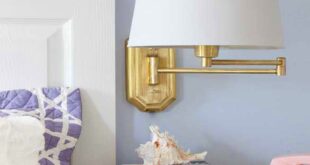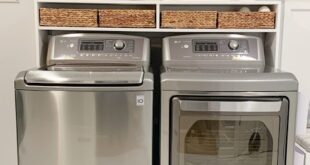
You guys know how much I love antiques & have been sharing my weekend antique finds on the blog! It’s so fun to share my finds with you guys & I asked what else you’d want to know about antiques … The number one request has been how to clean antiques! So I put together all of my tips for cleaning antiques. I want to first say that you need to do research & ask the questions before you purchase. Over time you know what to look for, but here are some things you need to look for before you hand over your money..
Keep your eye [& nose] out for:
-Open drawers & look for any signs of animal nests.
-Look for little holes from bugs or termites.
-Open the piece up and take a big sniff! Is there any urine or animal smells?
-Look at the back of the piece! Don’t miss any inch so you can check for any warning signs. Don’t forget underneath!
-Give it a good lift/shake to see that it’s sturdy & up to your standards.
Did it pass the tests above? Let’s get to cleaning…

Furniture
Start by wiping down the furniture with a dry cloth to get any surface dust or grime off. Then go in with a wet cloth and a slight amount of mild cleaner. The main thing to ensure when cleaning antiques is that you don’t use a cleaner with too many harsh chemicals in it. I love using hand washing dish soap to clean my furniture finds! It is gentle enough to use on the furniture but also does a good job cleaning it up.
For the dirtier pieces with stuck-on grime I like washing them down depending on the type of wood/painted wood that they are. I’ve been using Dawn Platinum Powerwash on some & have been really happy with it. It is a dish spray that’s a bit stronger & can get more of the junk off! If you have other stuck on stains steel wool or a bristle cleaning brush works really well to get them off. For the hard to reach spots a toothbrush works great to get in there and remove the grime. Once you’ve removed all of the dirt and such from your furniture you’ll want to dry the piece with a clean rag. If you desire you can spray furniture polish onto the piece once it is fully dry!
Did you find the piece in a barn? Is it super dirty? Do not be afraid to pressure wash it! I purchased [this electric pressure washer] & I’m obsessed with how it instantly cleans my antiques. I learned early on to not be afraid to get those barn finds wet & the pressure washer is sure to get all that dirty off to reveal what the piece was meant to look like.

Wood Bleach
I picked up a wooden trunk [seen throughout this whole post] that I absolutely loved but the color was a little too dark for me … So I thought I’d give bleaching it a try! It turned out amazing & I love the way it looks now. I recommend bleaching your wood piece somewhere outside so that you don’t have to worry about a mess & can use the sun to help bleach your wood. We got this wood bleach off of amazon, here. I didn’t do any prep work and just went right into applying the mixture. I used a bucket and mixed the hot water & wood bleach together in the bucket. To apply the mixture to the wood we used a smaller brush, then used a courser scrub brush to really strip into the wood. When brushing bleach into the wood make sure you are brushing with the grain. We applied the wood bleach and scrubbed the trunk four times, depending on the amount of stain on your piece you may have to do more or less.
After applying our final layer of the wood bleach, I rinsed the trunk off and dried it with a clean cloth. We had the trunk out in the sun while applying the wood bleach so that the sun could assist in the bleaching process. So we left the trunk out in the sun to dry. The wood bleach removed all of the stain and extra build-up from the trunk! Here is a little before & after of the trunk:
Before wood bleach:

After wood bleach:

Chippy Paint
You guys know I love a chippy painted piece of furniture! To preserve the chippy look and prevent pieces of paint from continuing to fall off your piece you will want to seal the paint. Before you apply your sealer you’ll want to clean your piece. To clean I start by removing all of the dust from the piece, you can use a blow dryer or leaf blower to do this. Stay far enough away from the piece that you are blowing off the dust but not the paint chips. Once you have finished this step you can use a damp cloth to remove any remaining dust!
Now its time to seal, I use a polyurethane matte top coat to seal the piece. To avoid brush strokes you’ll want to use a foam roller to apply the topcoat. A foam paintbrush works great for any hard to reach spots and corners of the furniture. If your piece is particularly chippy it may work best to apply the topcoat only with a foam paintbrush. You can ensure that less of paint chips off and have more control than a roller. Let the first coat dry, then I typically apply 1-2 more coats of sealer depending on how much I think the piece needs!
If you are working with the piece & it tests for lead paint you can work on encapsulating [see below for more on that] you can use special products like poly to seal the lead in. I would do your research on this yourself and learn what is safe for you and your home.

Rugs
Before buying a vintage rug always ask the seller the last time the rug was professionally cleaned. Ideally, the rug should have been cleaned prior to your purchase! I recommend getting your rug professionally cleaned if it was not already.
DIY- washing wool can cause serious damage to the rug if you are new to cleaning them, I personally do not have experience in this so I take my wool rugs to be professionally cleaned. Avoid steaming or dry cleaning vintage wool rugs because that could damage the rug as well.
Simple cleaners- You can purchase rug & upholstery cleaners like [this one] to get spots and stains out, but always remember to test out the product to make sure that the piece takes it well. Some natural things to try that work amazing are: hot water & vinegar mix, club soda, baking soda & hot water, rubbing alcohol/water/vinegar mix. Do your own research & look these up before you use them on your individual find.
Double vacuum- There are a few things you can do at home to help keep your rug clean. To get any dirt or debris out of the rug I recommend double vacuuming. Vacuum one side of the rug, then flip it over to vacuum the other side, keep flipping back and forth until you think you’ve gotten all of the debris. If you have any spills be sure to clean right away. Blot the spill with a paper towel and use a small amount of water if needed to dilute the spill, repeat until the stain is gone.
Pressure washing/outdoor washing- Not sure if you have ever watched this being done, but it’s the most satisfying thing to watch a rug get hosed off outside to see the dirt come out of it. This is a more invasive way to wash so do at your own risk, but You can get some hot soapy water [I have used dish soap] You can lay the rug out on the ground [hard surface is best] take a broom dipped in your soap and water mixture and scrub the broom with the soap mixture onto the rug. After you have scrubbed rinse out the rug and take the broom again to push the water and soap out of the rug. After you are done hang to dry in the sun.

Silver
Silver items such as antique silverware, serving items, sterling silver and more are pretty easy & shouldn’t be feared to get in there & clean. Mild detergent, lemon juice, & olive oil are all things I’ve used to clean silver with and have had great results. If you see some tarnish on these items try warm water & some mild soap first & see how that goes for you. If you need more you can bring in the olive oil or lemon juice. You can also find specific silver cleaners like [this one] if you want to purchase some.
Brass
Always wash the brass before polishing it. All you need is warm water and mild dish soap. Use a soft, damp cloth to apply the soapy water, and clean it until all debris, dust, and dirt are gone. If your piece is brass plated you are all set with cleaning!
If it is brass now you will polish it! Use a polish designed specifically for brass. Apply it according to the instructions on the bottle using a soft cleaning cloth and polish until tarnishes are gone.
Want to make your own polish? Here’s a lemon baking soda polish! Combine the juice of half a lemon with a teaspoon of baking soda and stir until it becomes a paste. Apply the paste with a soft cloth. If the tarnish is heavy, let the piece sit with the paste on it for 30 minutes. Rinse with warm water and dry. Repeat if necessary.
Upholstery
Chairs, sofas, stools, & other antique upholstery finds can be wonderful additions to your home, but personally they can be the scariest. Are there bugs? Are there stains? Are there smells? Personally upholstery items in my humble opinion should be checked over more than any of the others because it can hold a lot in that absorbent fabric. But don’t let that scare you away from buying it as they can be the best finds. Did you get a piece that you need to clean? Here are a few ideas for you:
1- Use an upholstery cleaner vacuum- I have [This one] & I love it. It’s great for if you have pets or kids who make messes on upholstery & it’s a convenient way to clean all of your upholstery.
2- You can use fabric deodorizers like [This one] to get any pet smells or other old & musty smells out.
3- You can use upholstery cleaners [like this] on rugs & upholstery. Whenever cleaning things like this remember to test it out on a small spot first!
4- There are some great natural/DIY ways to clean your upholstery as well that I highly recommend! You can use the following after doing your own research for each one:
1- 1/2 cup rubbing alcohol/ ½ cup distilled white vinegar
2- 1/2 cup club soda or carbonated water/ 1/4 cup vinegar/ 2 tablespoons dish detergent.
3- 1/2 cup water/ 2 ½ tablespoons vinegar

Metal
Antique metal will more than likely have some kind of rust on it, as always you don’t have to clean this off but if you want to I wanted to share how. To clean the rust you will need a wire brush, steel wool, an old rag, and mineral oil. For severely rusted pieces you will want to use the wire brush to scrub the item and remove the rust. Then you will go in with the steel wool and mineral oil to scrub the remaining rust off the piece. If the piece has slight rusting you can start with the steel wool and oil instead. Then your final step is to scrub with the old rag!
Test For Lead
A big concern many of you have shared with me is lead paint on antiques. Thankfully it is super easy to test the paint for lead with a Lead Test Kit. You can find Lead Test Kits at places like Amazon, Home Depot, Lowes, or your local hardware store. These are super easy to use, follow the instructions on the package, and it will tell you right away if a piece has lead paint!

I hope this helps you clean your antique finds! As you can see by the antique trunk, there are so many possibilities & hope for every antique find! If you have any other types of antiques you’d like to know how to clean let me know on Facebook or Instagram & I’ll be sure to add more to this post later. Thank you so much for stopping by the blog today and every day.



